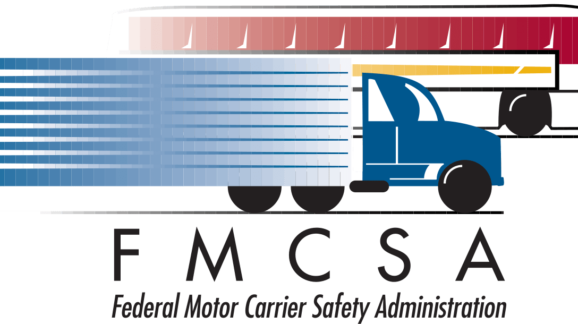CEI Comments on Federal Motor Carrier Safety Regulations

Introduction
On behalf of the Competitive Enterprise Institute (“CEI”), I respectfully submit these comments in response to the Federal Motor Carrier Safety Administration’s (“FMCSA”) Request for Comments Concerning Federal Motor Carrier Safety Regulations (FMCSRs) Which May Be a Barrier to the Safe Testing and Deployment of Automated Driving Systems-Equipped Commercial Motor Vehicles on Public Roads (“RFC”).[1]
CEI is a nonprofit, nonpartisan public interest organization that focuses on regulatory policy from a pro-market perspective.[2] CEI previously submitted comments to the National Highway Traffic Safety Administration (“NHTSA”) in response to its Request for Comments on the Federal Automated Vehicles Policy in September 2016,[3] and again submitted comments to NHTSA in response to its Request for Comments on the Automated Driving Systems: A Vision for Safety in September 2017.[4] CEI also submitted comments in response to 2018 requests from the Federal Railroad Administration, Federal Highway Administration, and NHTSA on automated transportation systems.[5]
CEI’s Scribner appeared on a discussion panel at NHTSA’s December 12, 2016, Federal Automated Vehicles Policy Public Meeting and participated in the U.S. Department of Transportation’s March 2018 Automated Vehicle Policy Stakeholder Discussion.[6]
RFC Response
In its RFC, FMCSA seeks comments on modernizing its regulatory regime to allow deployment of commercial motor vehicles (“CMVs”) equipped with automated driving systems (“ADS”) on U.S. roadways.
First, FMCSA should ensure that future proposed rules are performance-based, not prescriptive. In 1993, President Bill Clinton issued Executive Order 12866, which instructed regulatory agencies to “specify performance objectives, rather than specifying the behavior or manner of compliance that regulated entities must adopt.”[7] This performance-based approach was retained by President George W. Bush and reaffirmed in 2011 by President Barack Obama through Executive Order 13563.[8]
But as the Volpe report referenced in the RFC indicates, many of FMCSA’s regulations are prescriptive and—beyond temporary regulatory relief granted by waiver, exemption, or pilot program— prohibit many ADS functions and potential applications. As it moves forward with regulatory modernization, FMCSA should take care to prioritize regulatory outcomes over detailed prescription and compliance.
Second, FMCSA should ensure that future regulations related to ADS incorporate the latest voluntary consensus standards and continually monitor revisions to incorporated standards.
Under the National Technology Transfer and Advancement Act of 1995, Congress required that, whenever possible, “all Federal agencies and departments shall use technical standards that are developed or adopted by voluntary consensus standards bodies, using such technical standards as a means to carry out policy objectives or activities determined by the agencies and departments.”[9]
In policies for implementing the 1996 statute, the Office of Management and Budget’s 1998 Circular A-119 instructed agencies to establish “a process for ongoing review of the agency’s use of standards for purposes of updating such use.”[10]
As noted in the RFC, “manufacturing [is] regulated by NHTSA,”[11] so FMCSA is able to largely defer to NHTSA’s vehicle safety and performance regulatory expertise and instead focus on FMCSA’s CMV operations rules. Operating regulations related to human drivers, including hours of service and commercial driver’s license endorsements, should be altered to permit the realization of the safety and efficiency benefits of ADS-equipped CMVs. This could range from relaxing certain provisions for drivers of CMVs equipped with Level 3 ADS to providing a general exception for CMVs equipped with Level 4 ADS, where a human has no responsibility—and perhaps no ability—to manually direct the vehicle within its operational design domain during a trip.
Finally, FMCSA should ensure operator neutrality in future rulemakings. If an ADS is able to demonstrate safety equivalence or better with a human driver, FMCSA should permit its deployment. Regulations can be written to reflect differences between humans and ADS, but FMCSA should not promulgate rules that assume, for instance, that a human driver is inherently superior to an ADS or even necessary to the safe operation of a CMV.
Conclusion
We appreciate the opportunity to submit comments to FMCSA on this matter and look forward to further participation.
Respectfully Submitted,
Marc Scribner
Senior Fellow
Competitive Enterprise Institute
[1]. Request for Comments Concerning Federal Motor Carrier Safety Regulations (FMCSRs) Which May Be a Barrier to the Safe Testing and Deployment of Automated Driving Systems-Equipped Commercial Motor Vehicles on Public Roads, Notice, FMCSA-2018-0037, 83 Fed. Reg. 12933 (Mar. 26, 2018) [hereinafter RFC].
[2]. See About CEI, https://cei.org/about-cei (last visited May 2, 2018).
[3]. Comments of the Competitive Enterprise Institute, R Street Institute, & TechFreedom on the Federal Automated Vehicles Policy, Notice, NHTSA-2016-0090, 81 Fed. Reg. 65703 (Sep. 23, 2016), available at https://www.regulations.gov/document?D=NHTSA-2016-0090-1000.
[4]. Comments of the Competitive Enterprise Institute and R Street Institute on the Automated Driving Systems: A Vision for Safety, Notice, NHTSA-2017-0082, 82 Fed. Reg. 43321 (Sep. 15, 2017), available at https://www.regulations.gov/document?D=NHTSA-2017-0082-2810.
[5]. Comments of the Competitive Enterprise Institute on the Request for Information on Automation in the Railroad Industry, Notice, FRA-2018-0027, 83 Fed. Reg. 13583 (Mar. 29, 2018), available at https://www.regulations.gov/document?D=FRA-2018-0027-3297; Comments of the Competitive Enterprise Institute on the Request for Information on Automated Driving Systems, Notice, FHWA-2017-0049, 83 Fed. Reg. 2719 (Jan. 18, 2018), available at https://www.regulations.gov/document?D=FHWA-2017-0049-0091; and Comments of the Competitive Enterprise Institute on the Request for Comment on Regulatory Barriers to Vehicles With Automated Driving Systems, Notice, NHTSA-2018-0009, 83 Fed. Reg. 2607 (Jan. 18, 2018), available at https://www.regulations.gov/document?D=NHTSA-2018-0009-0061.
[6]. Transcript of the National Highway Traffic Safety Administration’s Federal Automated Vehicles Policy Public Meeting, Arlington, Va. (Dec. 12, 2016), available at https://www.regulations.gov/document?D=NHTSA-2016-0090-1130.
[7]. Executive Order No. 12866, 3 C.F.R. 638 (1993).
[8]. Executive Order No. 13563, 3 C.F.R. 215 (2011).
[9]. National Technology Transfer and Advancement Act of 1995, Pub. L. 104–113, 110 Stat. 783 (Mar. 7, 1996), § 12(d) (codified at 15 U.S.C. § 272 note).
[10]. Office of Management and Budget Circular A-119, § 15(b)(7).
[11]. RFC, supra note 1, at 12937.